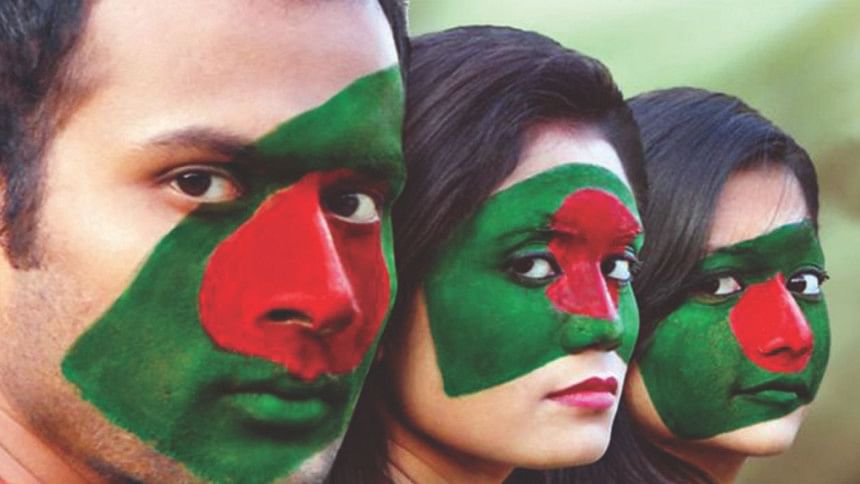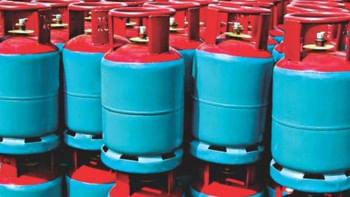Facts that give you goose bumps

You have heard of G-11, and may have wondered how outlandish that can be. How many layers of 'economicsphere' separate us and them? Now brace yourselves for N-11, and I am not referring to any highway where stalks the banned CNG-run three-wheelers, and where you can have a roadside shave as the intercity buses wheeze by.
While we are stuck in apparently endless traffic jams, grumbling, but forgetting to be grateful for the vastly improved power supply over the last few years, it appears that Bangladesh - hey that's us - has made real good progress.
Ahem! Bangladesh has overcome several low-middle income countries, including India, in several socio-economic indexes over the last four and a half decades. The life expectancy of people in Bangladesh has increased from 47 years in 1971 to 70 years in 2015, compared to Bharat's and similar other economies' 66 years. In 1971, child mortality in Bangladesh was 149, in India 141, and in other low-middle income countries 124 for every thousand births. But, today Bangladesh has been able to bring down that dreadful indicator to 33 deaths per thousand births, compared to 41 of India and 44 for other low-middle income countries. Almost one-third of new-born babies suffered from malnutrition in 1971, which today has come down to 16 percent and remains at par with India and other similar countries. While the number of births per Bangladeshi women in 1971 was 6.9 and Indians was 5.4 and that of similar countries 5.6, Bangladesh has made laudable progress in bringing that down to 2.2, the figure of which in India today is 4.4 and that in other comparable countries is 2.9. Clap, clap!
The above figures have not been released by the central office of the Bangladesh Awami League to woo voters before the forthcoming local elections, although from their point of view such an aggressive campaign would be necessary because the score in the last municipal elections 2010-11 was AL (backed candidates) – 88 and BNP(backed candidates)– 92. The heart-warming statistics were divulged in the city on October 19 by the World Bank at a workshop branded the Bangladesh Country Partnership Framework under a report titled the "World Bank Group Consultations, October-November 2015". (Bangladesh Pratidin, (Bengali daily) October 20, 2015)
Sadly, some major media outlets missed the point. Because it is the very Bank that denied and delayed the 6.15-long multipurpose Padma Bridge, the revelations accrue that much importance.
The World Bank Report went on to say that Bangladesh has amazed even the developed countries. And they are not talking about cricket. At independence in 1971, the number of children being inoculated was two per every one hundred; the number today has been reversed and ninety-seven children among every one hundred are vaccinated. India remains at 72 percent and other low-income countries at 76 percent. As a Rotarian and Scout Leader, I too feel humbly gratified in this milestone achievement, as Rotarians and Scouts in Bangladesh have been zealously involved in particularly the polio eradication scheme for nearly two decades.
In 1971, only 35 percent of Bangladeshis were facilitated by a developed sewerage system, which has increased to 57 percent today. No wonder, you have to hold your breath, as you walk the pavements on our city streets. But, be prepared to cover your muzzle a lot more in India (if you get the Visa that is) because the sewerage coverage there is 36 percent. Surprisingly, in similar other countries 47 percent of the people have proper sewage disposal. I have rarely felt so fresh.
According to the World Bank, Bangladesh has made major gains, and is on its way to becoming a low-middle income country in 2021, from the launching pad of which, it can commence its challenging efforts to becoming a middle-income nation. Happily, for all of us, in 2014, Bangladesh's per capita income reached US$1046, which trend if sustained shall enable the country to reach US$1220 in 2015. The figures do not narrate the existing monetary disparity among our people, but then they do indicate our country's potentiality to address the needs of those severely disadvantaged.
The strides that Bangladesh made have not gone unnoticed. At the inaugural ceremony of the World Bank at Peru, Lima recently, its President Dr. Jim Yong Kim mentioned only one country, saying that its economic and social progress is an example for many low-income countries.
The WB Report comes as a surprise (pleasant or otherwise, depending on one's myopic political view), but Bangladesh was long named among the Next Eleven (countries), marked by the reputed investment bankers Goldman Sachs and by economist-researcher Jim O'Neil, as having great prospects of catching up with the BRICS countries (Brazil, Russia, India, China and South Africa) and becoming among the world's largest economies in the 21stcentury. Psst! Bangladesh, Egypt, Indonesia, Iran, Mexico, Nigeria, Pakistan, the Philippines, Turkey, South Korea and Vietnam are listed in N-11.
We are not a great nation when it comes to appreciating our own kind. Let the good work continue, the patting will follow, hopefully.
The author is a practising Architect at Basha Bari Ltd., a Commonwealth Scholar and a Fellow in the UK, a Baden-Powell Fellow Scout Leader and a Major Donor Rotarian.

 For all latest news, follow The Daily Star's Google News channel.
For all latest news, follow The Daily Star's Google News channel. 



Comments